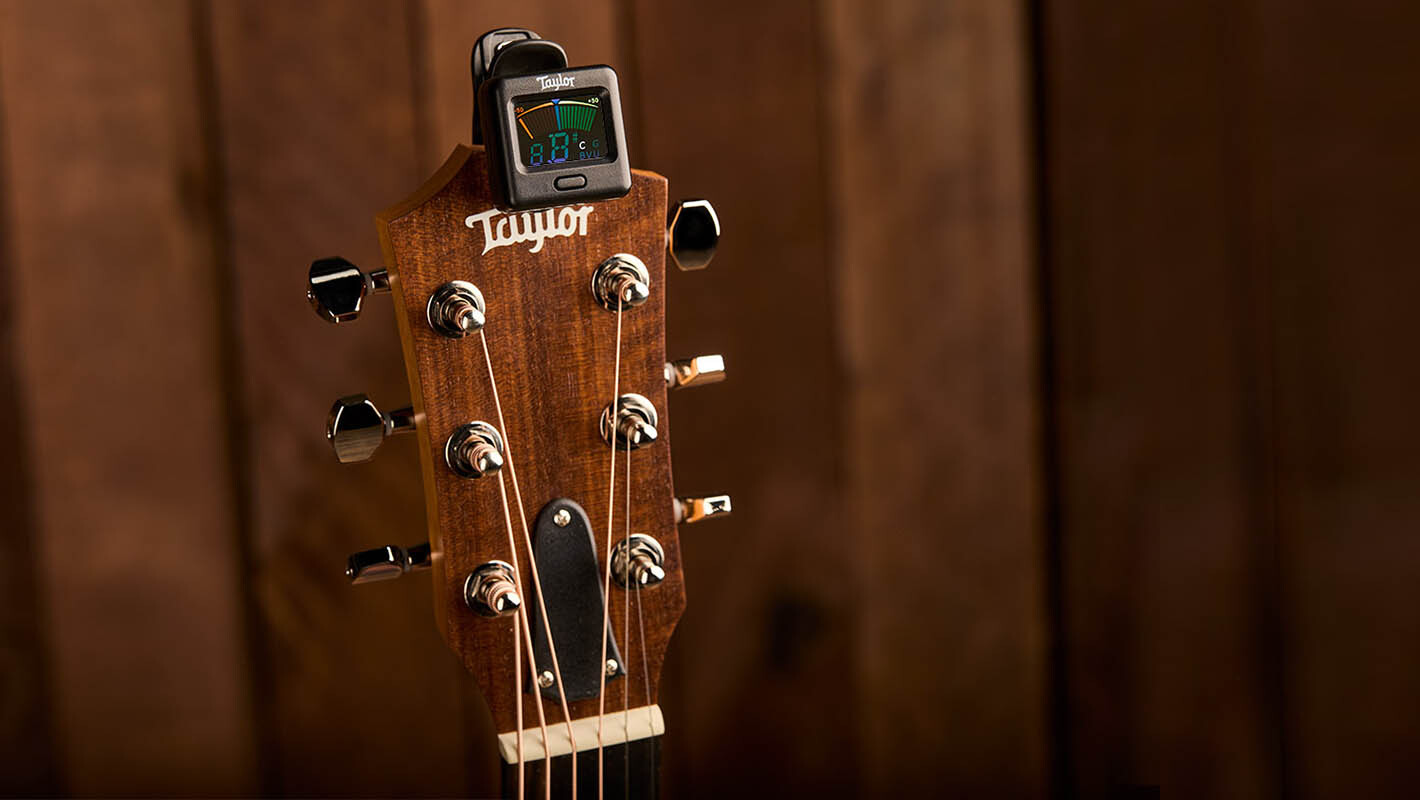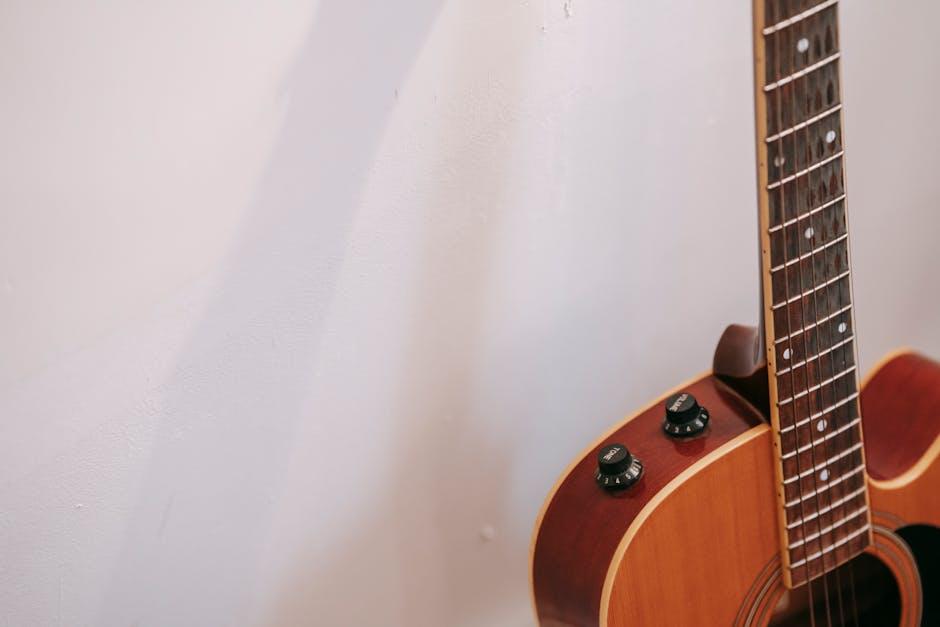Strumming your way to acoustic guitar greatness? Well, before you start serenading your imaginary audience with off-key tunes, it’s probably a good idea to master the art of tuning first. Fear not, fellow acoustic enthusiasts, for we are here to guide you through the whimsical and mysterious world of guitar tuning techniques. Get ready to pluck, twang, and adjust your way to musical perfection!
Contents
- 1 Understanding Standard Tuning for Acoustic Guitar
- 2 Exploring Alternative Tunings to Expand Your Musical Range
- 3
- 4 Perfecting the Use of Electronic Tuners and Mobile Apps
- 5 Mastering the Art of Tuning by Ear for a More Intuitive Approach
- 6 Tips for Maintaining Your Guitar to Ensure Consistent Tuning
- 7 Advanced Techniques: Fine-Tuning Your Guitar for Studio Recordings
- 8 FAQs
- 9 Time to Rock Out!
Understanding Standard Tuning for Acoustic Guitar
So, you’ve picked up the acoustic guitar and now you’re ready to start strumming away. But before you dive into playing your favorite tunes, it’s important to get a good grasp on standard tuning. Don’t worry, it’s not as intimidating as it sounds – we’re here to break it down for you!
Standard tuning for acoustic guitar involves tuning each string to a specific pitch, from the lowest string to the highest string. This tuning allows you to play a wide variety of songs and is the foundation for most guitar playing. Here’s how it goes:
- E – The lowest string is tuned to an E note.
- A – The next string is tuned to an A note.
- D – Moving on, the third string is tuned to a D note.
- G – The fourth string is tuned to a G note.
- B – The fifth string is tuned to a B note.
- E – Finally, the highest string is tuned to another E note, one octave higher than the lowest string.
Once you’ve got your guitar in standard tuning, you’re ready to rock – or strum, rather. Remember, practice makes perfect, so don’t get discouraged if your fingers feel like they’re tied in knots at first. Keep at it, and before you know it, you’ll be playing your favorite songs like a pro!
Exploring Alternative Tunings to Expand Your Musical Range
Are you tired of playing the same old chords and melodies on your guitar? It’s time to shake things up and explore some alternative tunings that will expand your musical range. Trust me, once you start experimenting with different tunings, you’ll never go back to standard tuning again!
One of the most popular alternative tunings is Open D tuning, where the strings are tuned to DADF#AD. This tuning is great for playing slide guitar and creating lush, open chord voicings. You can even play some killer blues riffs that will make your audience swoon. Plus, it’s a lot of fun to say “DADF#AD” out loud – go ahead, try it!
If you’re feeling adventurous, why not try out Drop D tuning? In this tuning, you’ll lower your low E string down to a D, giving your guitar a deeper, heavier sound. It’s perfect for playing metal and hard rock, and you’ll feel like a total rock star when you unleash some face-melting riffs in Drop D. Just be careful not to let the power go to your head!
And let’s not forget about Open G tuning – another fan favorite among guitarists. By tuning your strings to DGDGBD, you’ll open up a whole new world of possibilities for playing blues, folk, and even some good ol’ rock ’n’ roll. You can experiment with fingerpicking patterns and slide techniques that will take your playing to the next level. So grab your guitar, tune it to Open G, and get ready to rock the house!

humidity-and-temperature-in-guitar-tuning-stability”>The Role of Humidity and Temperature in Guitar Tuning Stability
Humidity and temperature can play a major role in how often you find yourself tuning your guitar. Here’s a breakdown of how these sneaky culprits can wreak havoc on your strings:
- Humidity: Your guitar is basically a diva when it comes to moisture in the air. Too much humidity and your strings will loosen up faster than a cat chasing a laser pointer. Too little humidity and they’ll tighten up like your wallet after a trip to the music store.
- Temperature: Just like Goldilocks trying out all the beds, your guitar prefers a temperature that’s not too hot, not too cold, but just right. Extreme temperatures can cause the wood to expand or contract, leading to some seriously wonky tuning.
Imagine your guitar as a high-maintenance celebrity on a red carpet. It needs just the right conditions to perform at its best. And just like any diva worth their salt, it’ll throw a tantrum if things aren’t perfect. So, keep an eye on the humidity and temperature levels to avoid any meltdowns during your next serenade.
Remember, when it comes to guitar tuning stability, humidity and temperature are like those annoying friends who always show up uninvited. But with a little monitoring and some TLC, you can keep them in check and ensure your strings are always ready to rock.

Perfecting the Use of Electronic Tuners and Mobile Apps
So you think you’re a tuning pro, huh? You’ve got your trusty electronic tuner or mobile app ready to go, but are you really using it to its full potential? Let’s dive into some tips and tricks to perfect your tuning game!
First off, make sure you’re using the right settings on your tuner or app. Most electronic tuners have different modes for different instruments, so double check that you’re in the correct mode for your guitar, bass, ukulele, or whatever you’re tuning. No one wants to sound like a banjo when they’re trying to play a smooth jazz tune!
Next, **don’t forget to calibrate** your tuner. It’s like giving your tuner a little tune-up so it’s working at its best. Some electronic tuners have a calibration feature built in, so take advantage of it to ensure you’re getting the most accurate readings.
Lastly, **practice, practice, practice**. The more you use your tuner or app, the better you’ll get at quickly and accurately tuning your instrument. So don’t be afraid to whip it out at every practice session or jam session. Who knows, maybe you’ll become the go-to tuning expert in your band!

Mastering the Art of Tuning by Ear for a More Intuitive Approach
So you think you’re a tuning expert, huh? Well, get ready to take it one step further and truly master the art of tuning by ear. It’s time to tap into your inner musical genius and embrace a more intuitive approach to tuning your instrument.
Forget relying on digital tuners or apps – it’s time to trust your ears and develop a deeper connection with your instrument. By tuning by ear, you’ll not only improve your pitch recognition skills but also develop a more intimate understanding of the nuances of your instrument’s sound.
But how exactly can you fine-tune your tuning skills? Here are some tips to help you become a tuning savant:
- Start by tuning one string at a time. Focus on getting each string perfectly in tune before moving on to the next.
- Experiment with different tuning methods, such as harmonics or comparing pitches with other instruments.
- Practice regularly to train your ears and build confidence in your ability to tune by ear.
So, grab your instrument, trust your instincts, and embrace the art of tuning by ear. Who knows, you might just discover a whole new level of musicality that you never knew existed!
Tips for Maintaining Your Guitar to Ensure Consistent Tuning
So, you’ve finally decided to take up the guitar and become the next rock star sensation. Congratulations! But before you start shredding on stage, you need to make sure your guitar is in tune.
Here are some hilarious tips to help you maintain your guitar and ensure consistent tuning:
- Keep it clean: Just like your bedroom floor, your guitar needs a good cleaning every now and then. Get rid of that dust and grime that’s been accumulating for months. Your guitar will thank you by staying in tune.
- Protect your strings: Your guitar strings are like the delicate hairs on a supermodel’s head. Treat them with care and they’ll stay in tune for longer. Avoid touching them with greasy fingers or cutting them with rusty wire cutters. Your guitar will sound sweeter than ever.
- Check your tuning pegs: Those little knobs on your guitar headstock are there for a reason. Make sure they’re tight and not wobbly. If they are, tighten them up with a screwdriver. Your guitar will hold its tune like a champ.
So there you have it – a few simple tips to keep your guitar in tip-top shape. Now go out there and rock the world with your perfectly tuned instrument!
Advanced Techniques: Fine-Tuning Your Guitar for Studio Recordings
So you’ve finally landed a gig recording your sweet guitar riffs in the studio? Congrats! Now it’s time to make sure your trusty old guitar is ready to rock and roll. Let’s dive into some advanced techniques to fine-tune your guitar for studio recordings.
First off, let’s talk about tuning. We all know how important it is to have your guitar in tune, but in the studio, every little out-of-tune note will be magnified tenfold. So grab your trusty tuner and make sure every string is perfectly in tune. No one wants to hear those cringe-worthy sour notes on playback!
Next up, let’s talk about intonation. If your intonation is off, your guitar will sound like a hot mess in the studio. Grab a screwdriver and adjust the saddles on your bridge until each string is perfectly in tune at the 12th fret. Your producer will thank you for taking the time to fine-tune your intonation.
Lastly, let’s talk about string action. Low string action can cause buzzing and high string action can make it difficult to play. Find that sweet spot where your strings are just the right height off the fretboard. Your fingers will thank you for making it easier to shred those killer solos in the studio!
FAQs
What do I do if my guitar keeps going out of tune?
Don’t worry, it’s just your guitar’s way of expressing itself. Try stretching your strings before playing, using a good quality tuner, and making sure your guitar is properly set up. If all else fails, maybe your guitar just wants some extra attention – give it a little love and maybe it’ll stay in tune for longer.
How often should I tune my guitar?
As often as your guitar tells you to! Just kidding. It’s a good idea to tune before each practice session or gig to keep your sound on point. But hey, if you feel like living on the edge, go ahead and push the boundaries of out-of-tune music.
Any tips for tuning by ear?
Sure, if you’re a true rebel who doesn’t go by the rules of technology, tuning by ear can be a fun challenge. Just remember to start with the low E string and work your way up. You can also use a reference pitch from a piano or online tuning tool to help you out.
What’s the best way to tune using harmonics?
Ah, the mystical art of harmonics tuning. To master this technique, lightly touch the string at the 5th, 7th, or 12th fret to create a harmonic. Compare the pitch of the harmonic with the open string and adjust accordingly. It may take some practice, but once you get it right, you’ll sound like a tuning wizard.
Should I use a capo when tuning my guitar?
You can if you’re feeling fancy, but it’s not necessary. Just make sure to position your capo before tuning, and adjust your strings accordingly. It may take a bit more time, but hey, being extra can sometimes lead to extraordinary results.
Time to Rock Out!
Now that you’ve mastered these acoustic guitar tuning techniques, you’re ready to hit the stage and impress all your friends with your mad skills. Remember, practice makes perfect, so keep on fine-tuning those strings and strumming away. Who knows, maybe you’ll become the next guitar hero in no time!



